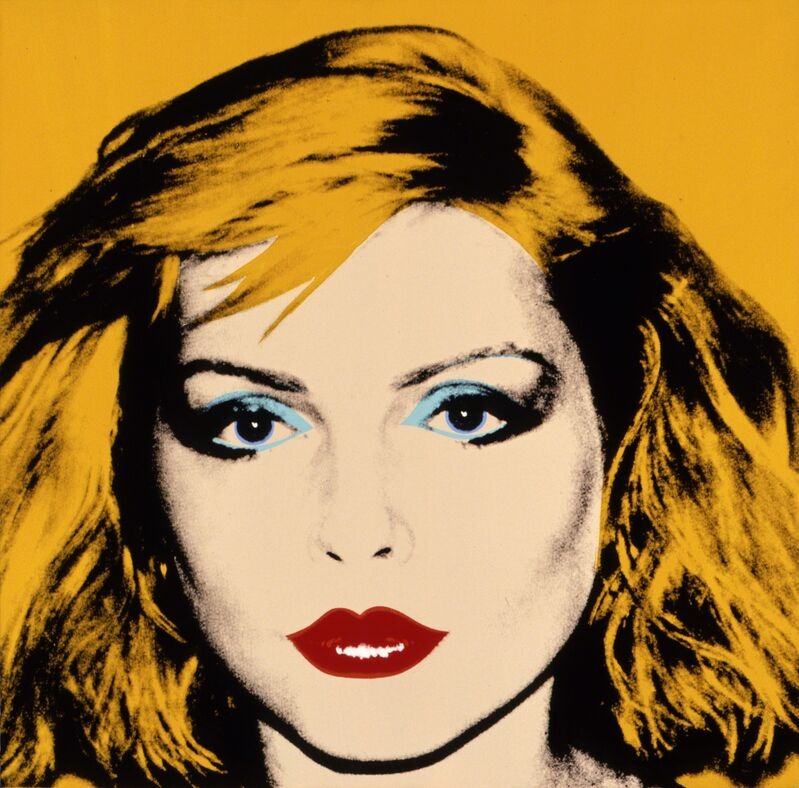
Debbie Harry by Andy Warhol
In the vibrant realm where music meets art, few collaborations have left an indelible mark as powerful as that of Debbie Harry by Andy Warhol. This dynamic partnership brought together the iconic lead vocalist of Blondie, Debbie Harry, and the legendary pop artist, Andy Warhol, resulting in a fusion of creative genius that resonated across art and music worlds. Let's delve into their compelling journey, exploring how their unique synergy pushed boundaries, challenged norms, and created a lasting cultural legacy.
Introduction
 Before we dive into the depths of this captivating collaboration, it's essential to understand the key players. Debbie Harry, a charismatic and talented musician, captured hearts with her sultry voice and captivating stage presence. On the other side of the creative spectrum stood Andy Warhol, a visionary artist known for pioneering the Pop Art movement and redefining the relationship between art and celebrity culture.
Before we dive into the depths of this captivating collaboration, it's essential to understand the key players. Debbie Harry, a charismatic and talented musician, captured hearts with her sultry voice and captivating stage presence. On the other side of the creative spectrum stood Andy Warhol, a visionary artist known for pioneering the Pop Art movement and redefining the relationship between art and celebrity culture.
Collaboration Overview
The intertwining of Debbie Harry's and Andy Warhol's worlds was a match made in artistic heaven. Their connection was fueled by mutual admiration and a shared fascination with fame's intricate web. Through this synergy, they embarked on various collaborative projects that seamlessly blended their talents. One notable example was Harry's appearance in Warhol's experimental music video for "Union City Blue," a visual and auditory spectacle that showcased their ability to challenge conventions.
Influence on Art and Culture
Their collaboration reverberated through both the music and art realms, leaving an undeniable imprint. In the music sphere, Debbie Harry's distinctive vocals and Blondie's genre-blurring sound paved the way for new wave music's rise, while Warhol's visionary approach to visual art birthed the influential Pop Art movement. Their partnership embodied the cultural zeitgeist, capturing the essence of an era marked by reinvention and self-expression.
Parallel Careers
While their collaborative efforts shone brightly, it's crucial to recognize the individual trajectories that defined Debbie Harry and Andy Warhol. Harry's enigmatic presence and powerful vocals propelled Blondie to global fame, while Warhol's artistry challenged artistic norms and conventions. The parallels between their careers highlight the profound impact they had on their respective fields.
Pop Art and New Wave
The magic of their collaboration lies in the convergence of two distinct movements: Pop Art and New Wave. Pop Art celebrated the ordinary and transformed it into extraordinary art, much like Blondie's music redefined the pop landscape. The rise of New Wave marked a departure from traditional rock, embracing a fusion of punk, electronic, and pop influences. Together, they forged a creative synergy that embodied the spirit of innovation.
Iconic Portraits
Warhol's portraits of Debbie Harry stand as emblematic symbols of their partnership. Through his signature silkscreen technique, Warhol immortalized Harry's allure and charisma. These portraits transcended mere visual representation, capturing the essence of their creative connection and sparking a dialogue about celebrity, identity, and fame's allure.
Blurring Boundaries
The collaboration between Harry and Warhol transcended artistic mediums, boldly challenging societal norms. Warhol's art challenged gender and sexuality norms, while Harry's fearless persona defied conventions of beauty and femininity. Their work together became a mirror reflecting the evolving dynamics of identity and self-expression, prompting audiences to question and reconsider societal boundaries.
Enduring Legacy
Decades after their initial collaboration, the legacy of Debbie Harry by Andy Warhol continues to resonate. Their influence on modern art and music remains palpable, evident in the waves of artists who draw inspiration from their audacious creativity. As modern musicians blend genres and artists shatter traditional norms, the spirit of their collaboration lives on, reminding us that true innovation knows no bounds.
Conclusion
In the intricate tapestry of art and music, the collaboration between Debbie Harry and Andy Warhol stands as a beacon of creative brilliance. Their partnership defied categorization, blending their unique talents into a symphony of innovation. Through their portraits, music, and audacious spirit, they not only challenged the norms of their time but also left an everlasting imprint on the trajectory of art and culture.
FAQs:
-
Did Debbie Harry and Andy Warhol have a personal relationship beyond their collaboration?
While they collaborated extensively, there's no evidence of a deep personal relationship between Debbie Harry and Andy Warhol. Their connection primarily revolved around their shared creative endeavors.
-
What other musicians did Andy Warhol collaborate with?
Andy Warhol's influence extended to multiple musicians, including The Velvet Underground. He famously managed the band and designed their iconic banana album cover.
-
How did their collaboration impact the art world's perception of celebrity?
Their collaboration blurred the lines between art and celebrity, challenging traditional notions of fame and artistic expression. This shift in perception paved the way for more nuanced discussions about the relationship between fame and creativity.
-
Did Debbie Harry's collaboration with Andy Warhol affect Blondie's music style?
While the collaboration didn't drastically alter Blondie's music style, it did contribute to their image and artistic identity. It added an avant-garde element to their persona, reflecting the spirit of artistic experimentation.
-
What was the significance of Andy Warhol's silkscreen portraits in the art world?
Andy Warhol's silkscreen portraits revolutionized portraiture by blending mass production techniques with artistic expression. These portraits challenged the traditional notions of art's uniqueness and authenticity, sparking conversations about the nature of art in the age of mechanical reproduction.


